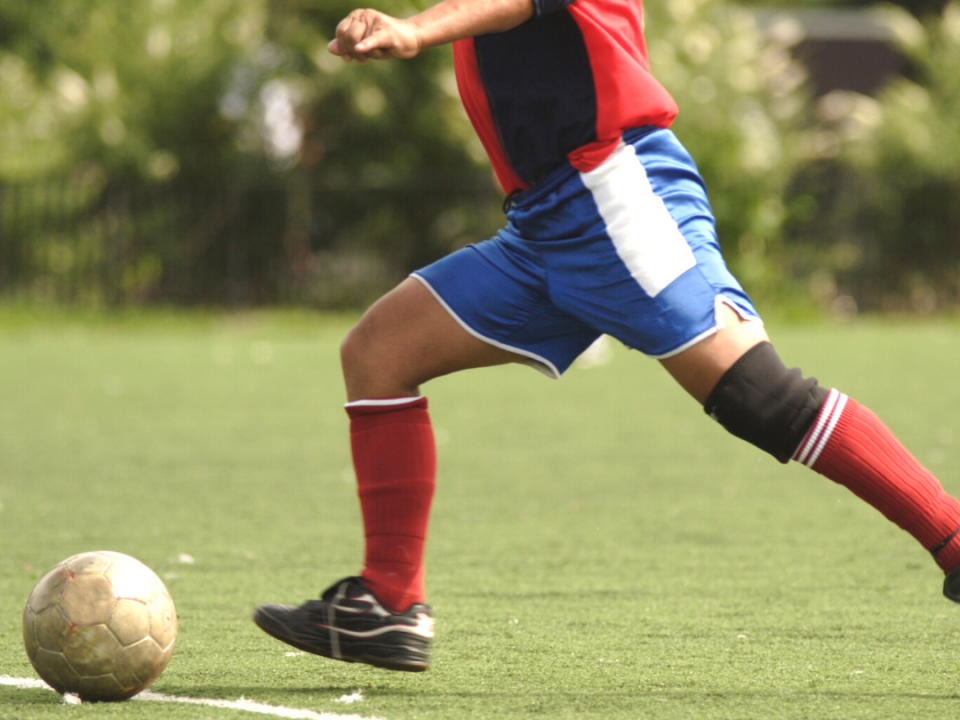Yao Ming’s unfortunate departure from the highly contested NBA playoffs against the Los Angeles Lakers has been attributed to a stress fracture in his foot, an injury that has plagued him for the past couple of years. Stress fractures in athletes are the result of abnormally high stresses placed across bones and are most common in the lower extremities. The foot and ankle are often subject to forces that are several times our body weight, and it is not difficult to imagine that the 7 foot, 6-inch, 310-pound center demands more of his bones than the average “weekend warrior” shooting hoops on the court.
The mechanism underlying the development of stress fractures is relatively simple. Bone is a remarkable material not only for its strength and amazing structural organization but also for its ability to adapt and respond to the daily stresses of the body. This process is gradual, however, and stress fractures can result when the demands applied are too rapid or exceed the ability of the bone to respond. The small bones of the foot, particularly the second metatarsal, are often subject to such high forces and are therefore particularly susceptible to this injury.
Athletes with a stress fracture will typically complain of pain when weight-bearing and discomfort that is most pronounced at the end of a workout or training session. A careful physical examination can help to localize the source of discomfort. Stress fractures can cause some inflammation of the tissues lining the bone and are often tender to firm palpation. Imaging can be helpful, but it is important to note that an x-ray may be negative as these radiographic changes lag behind the injury and often do not become apparent until substantial remodeling of the bone has occurred. MRI or bone scan studies are more sensitive to identifying these fractures in their early stages.
Stress fractures of the foot are best diagnosed and treated by orthopedic surgeons or podiatrists; however, the best treatment of stress fractures is to prevent them. The duration of exercise and walking or running mileage should always be increased gradually. Physical therapists and trainers can help to develop an appropriate training program. If a stress fracture is sustained, a consultation with a medical professional is essential to develop an individualized treatment plan. Typically, treatment includes protected weight-bearing of the affected extremity for 4-6 weeks, physical therapy, and orthotics if the mechanics of the feet and lower extremity are a contributing factor. Orthotics can help the injured foot or leg absorb forces from the ground and disperse forces away from the fracture site. It is imperative to comply with the protected weight-bearing regimen as fractures that fail to heal may require surgery.
For athletes, such as Terrell Owens and running back Jonathon Stewart, surgical intervention got them back to play a bit more quickly than conservative treatment. Their results bode well for Yao Ming, as both of those athletes returned to their previous level of play.
Whatever the treatment, stress fractures often heal well. It is important to remember that prevention is the best medicine for these injuries. Don’t overdo it, especially as the weather gets nicer and you want to get back into playing lots of sports. It is a long summer, so gradually ease back into your favorite activities.
Yao Ming’s unfortunate departure from the highly contested NBA playoffs against the Los Angeles Lakers has been attributed to a stress fracture in his foot, an injury that has plagued him for the past couple of years. Stress fractures in athletes are the result of abnormally high stresses placed across bones and are most common in the lower extremities. The foot and ankle are often subject to forces that are several times our body weight, and it is not difficult to imagine that the 7 foot, 6-inch, 310-pound center demands more of his bones than the average “weekend warrior” shooting hoops on the court.
The mechanism underlying the development of stress fractures is relatively simple. Bone is a remarkable material not only for its strength and amazing structural organization but also for its ability to adapt and respond to the daily stresses of the body. This process is gradual, however, and stress fractures can result when the demands applied are too rapid or exceed the ability of the bone to respond. The small bones of the foot, particularly the second metatarsal, are often subject to such high forces and are therefore particularly susceptible to this injury.
Athletes with a stress fracture will typically complain of pain when weightbearing and discomfort that is most pronounced at the end of a workout or training session. A careful physical examination can help to localize the source of discomfort. Stress fractures can cause some inflammation of the tissues lining the bone and are often tender to firm palpation. Imaging can be helpful, but it is important to note that an x-ray may be negative as these radiographic changes lag behind the injury and often do not become apparent until substantial remodeling of the bone has occurred. MRI or bone scan studies are more sensitive to identifying these fractures in their early stages.
Stress fractures of the foot are best diagnosed and treated by orthopedic surgeons or podiatrists; however, the best treatment of stress fractures is to prevent them. The duration of exercise and walking or running mileage should always be increased gradually. Physical therapists and trainers can help to develop an appropriate training program. If a stress fracture is sustained, a consultation a medical professional is essential to develop an individualized treatment plan. Typically, treatment includes protected weightbearing of the affected extremity for 4-6 weeks, physical therapy, and orthotics if the mechanics of the feet and lower extremity are a contributing factor. Orthotics can help the injured foot or leg absorb forces from the ground and disperse forces away from the fracture site. It is imperative to comply with the protected weightbearing regimen as fractures that fail to heal may require surgery.
For athletes, such as Terrell Owens and running back Jonathon Stewart, surgical intervention got them back to play a bit more quickly than conservative treatment. Their results bode well for Yao Ming, as both of those athletes returned to their previous level of play.
Whatever the treatment, stress fractures often heal well. It is important to remember that prevention is the best medicine for these injuries. Don’t overdo it, especially as the weather gets nicer and you want to get back into playing lots of sports. It is a long summer, so gradually ease back into your favorite activities.






